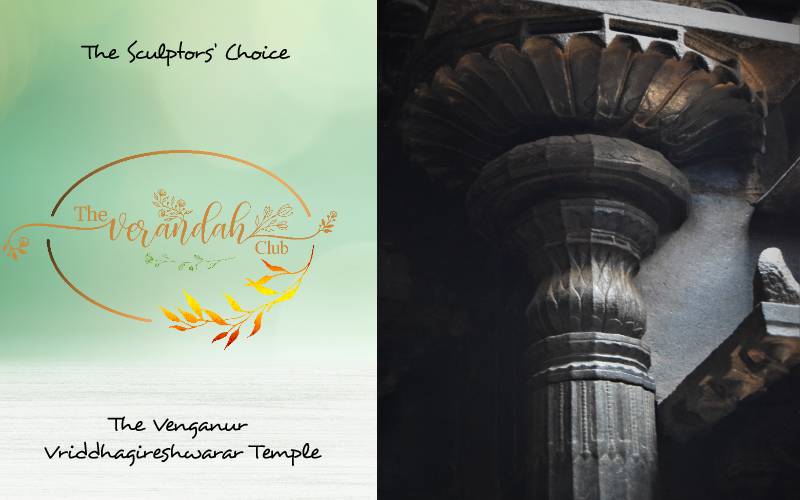
The Venganur Vriddhagireshwarar Temple is one of the examples of Vijayanagar architecture. The contributions of Vijayanagar kings in the field of architecture are timeless. Many temples were destroyed during the Islamic invasions, but they were all rebuilt and expanded into huge complexes by the Vijayanagar kings. Rebuilding works were carried out by the kings and were also supported by their governors, the Nayaks.
The Vijayanagar kings did not have much scope of building new temples, as there were many ancient ones that existed in Tamil Nadu from time immemorial. So, they expanded the already existing structures by adding Rajagopuram-s, Kalyana Mandapam-s and other festive halls.
The architecture of Vijayanagar was known for its monolithic sculptured pillars. They were usually 12 to 13 feet high. One huge rock will be made into a pillar with sculptures on it. The Rajagopuram-s were also intricately sculpted. This was the trademark of Vijayanagar kings.
This remote place is situated in a village in Perambalur district of Tamil Nadu which lies close to Vriddhaachalam. The temple found here is dedicated to Vriddhagireshwarar and Vriddhaambika. It must have been built around in 17th century. The temple is believed to have been fully completed by the local subordinate and the chief of the region under the instructions of Tanjavur Nayaks.
The temple has a small Rajagopuram and is said to have been renovated recently. As we enter the temple through the Rajagopuram, three Prakaaraa-s can be noticed. The first structure that one witnesses is the Nandhi Mandapam (The hall of Nandhi, Vahana of Lord Shiva). It is located between the entrance and the second Gopuram. To the right of the Nandhi Mandapam is a beautiful Kalyana Mandapam (Marriage hall). The descriptions of the Mandapam shall be found at the latter portions of the article.
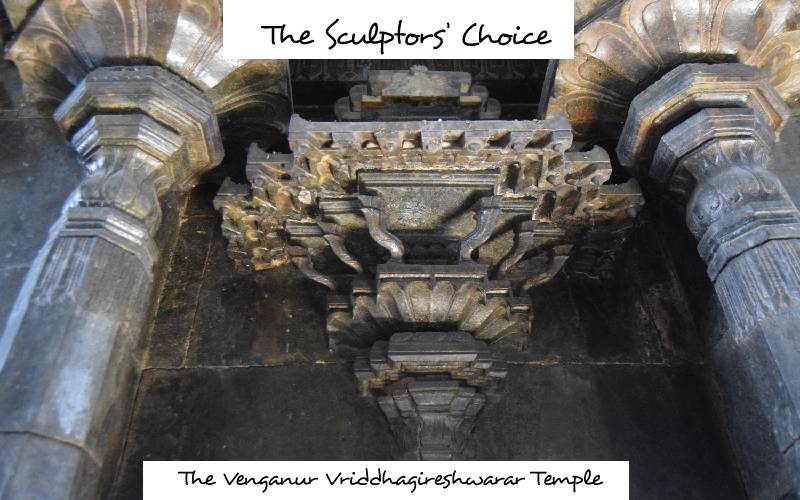
Sri Vriddhagireshwarar Temple was built by a Reddiar about 460 years ago. He was a Shiva Bhakta (Devotee of Lord Shiva) and used to visit Vriddhachalam on every Pradosham to worship Sri Vriddhachalewarar.
One particular day, he could not go because of the flash floods and he had halted at Venganur village for the night. The Reddiar had a dream that night. It was of a Shiva Lingam, and an idol of Ambaal buried at a secluded spot in the village. He was asked to build a temple at Venganur, install the idols found, and start worshipping there. The very next day, he found the buried idols in the same spot that he had dreamt. According to the voices that guided him to reach the idols, he installed them and named the Lord as Vriddhagireshwarar and His consort to be Vriddhaambaal.
Reddiyar designed the temple with the help of several Sthapathi-s (Sculptors) who had come to the village from Vijayanagar due to extreme draught and war conditions which prevailed in their native villages. The work that the main Sthapathi, whom the Reddiar chose, had begun, was completed by his son. This temple turned out to be an unbelievable architectural and sculptural marvel of that period.
The temple once used to be so dark because it was completely roofed. One would find numerous bats at that time. Then, it was eventually renovated. The finishing of the two sanctums of Vriddhagireshwarar and Vriddhaambika was done with highly polished granite with intricately carved images, and designs. It could not be compared with any structures because this temple had its own uniqueness.
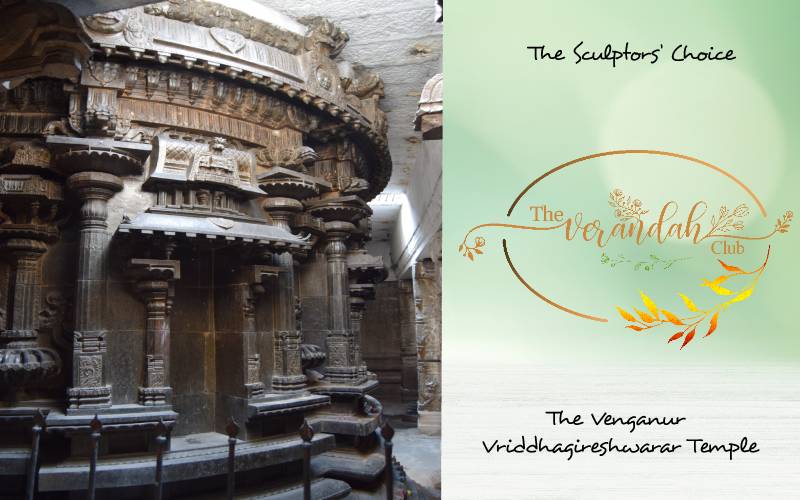
The rear portion of the sanctum is circular in style. It was not made of Gajabrashta (Elephant back) Vimana form, where the structure used to be half-round. But, one can spot a completely rounded structure. This is called as the Omkaara Vimana. The niches and the outer wall decorations goes beyond explanations. The depictions of animals, birds, and Gana-s are finely sculpted with gaps in between the layered levels. It can be said that it is a fascinating work of art with such unique traits.
Similar to the shrines at Vriddhachalam, there are separate shrines for Vriddhaambaal and Balaambaal in the Vriddhagireshwarar temple. The greatness of the temple is expounded in the works of Sri Sivaprakashaswamigal. Some of them are 'Tiruvengai Kalambagam,' 'Tiruvengai Ula,' 'Tiruvengai Maahatmyam,' 'Tiruvengai Kovai,' and 'Tiruvengai Andhadhi.' This temple was patronized well by the king who ruled at that period. A lot of Bhakti literature on the temple is also available.
The south face of the circular sanctum has a Dakshinamurthy shrine. Even the Koshta (Outer wall of the Garbhagriha) is fashioned in a miniature grand style of a temple. There are 6 Koshta-s in this beautiful temple, one koshta is dedicated to Dakshinamurthy while others are empty. The sculpted granite were all polished during the time of erection of the temple which involved highly complicated processes.
Even the decorations found on the wall are highly appealing. One can notice the sophisticated carvings and designs even at the top portion of the Vimana. Usually various Ganaa-s can be seen in a layer below the top portion, which is called Bhutavari, but here numerous other designs could be witnessed. Though this is slightly deviating from the traditional style of architecture, it can be opined that the Sthapathi-s had done a phenomenal work of art.
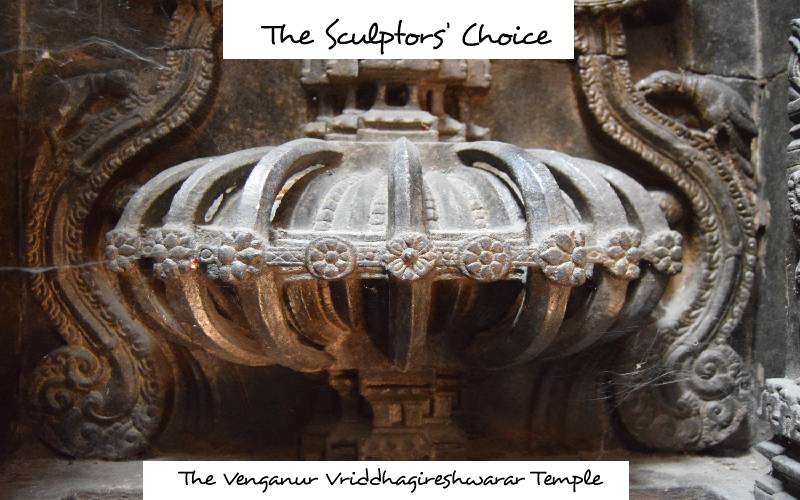
Several carvings of lotus petals in the form of medallions could be observed at the top portion of every artistic pillar throughout the temple. The pillars were chiseled in an exceptionally complicated but aesthetically appealing style. The aerial view of the pillars resemble a blooming lotus with leaves, petals, and a stalk. The Kumbhapajra (Baloon-like bottom portion of the pillars) also hold innumerable floral decorations. Birds, animals like parrots, lions, crocodiles, monkeys, & lizards are also part of the sculptures.
It is very unfortunate that the heads of the parrot-sculptures were all chopped. The reason behind the chopped heads of the parrots was enumerated through a story.
Someone in the village had a dream that these life-like sculptures, especially parrots chirped a lot during the morning times and this had disturbed the Lord who was asleep. So, they had chopped off the parrots’ heads.
Though it is not a very reliable story, it is how the people of the village believe and narrate. The sad truth is that none of the parrot-sculptures have their heads, except few which has missed the chop.
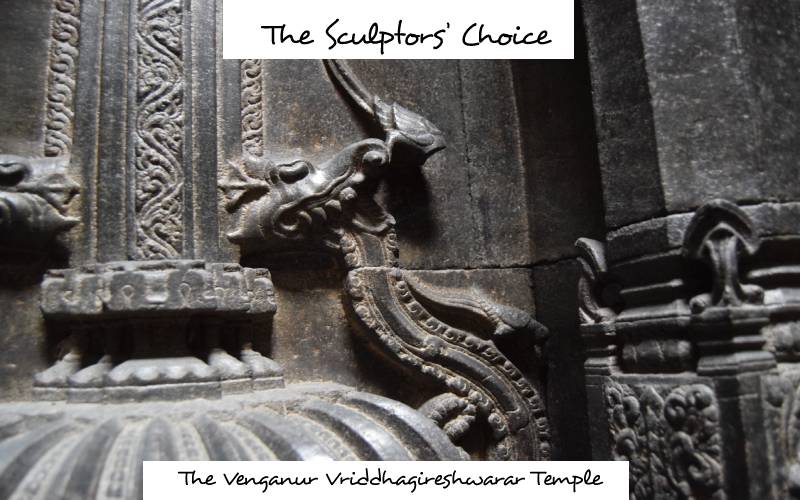
One of the rare presentations of sculpting could be observed in this temple. It is where the sculptures of Bhutaganaa-s are found standing on the heads of Makara-s (Crocodiles) performing various actions.
The loops in the Kumbapajra-s are so intricately designed with measurable gaps between the layers. It is a mesmerizing sight to closely observe those masterpieces.
While Vriddhagireshwarar's sanctum is circular, His consort, Vriddhaambika's is square in shape with plentiful intricate designs and sculptures. The base of the temple is normally designed with some floral adornments but Arasailai Madippu-s (Patterns of Banyan leaves) are found here. Similar patterns could be observed all throughout the basement area of the temple which is one of the rarities. It could be pointed that nowhere in the country such a design can be seen. The Adhishtaanam-s (The extreme base) are highly molded, and amazing.
The Bhutavari-s in the Gopuram are especially very expressive. In fact, they seem lively. One of the Gana-s bears the expression of screaming and if carefully noticed it is as if the scream of the Gana could be heard.
The sanctums in the temple are completely covered with Mandapam-s which is also impressively decorated. The granite stones with which the Mandapam is made of are plain in nature, unlike the sanctum, which is well-polished.
Another marvel in the temple is the Nataraja Sannidhi (Sanctum). Most of the temples in India only carry a bronze idol of the Lord. But here, Nataraja and His consort, Parvati Devi are chiseled out of granite stones. The stone idols bear the equivalent resemblance to that of bronze without any additional supports.
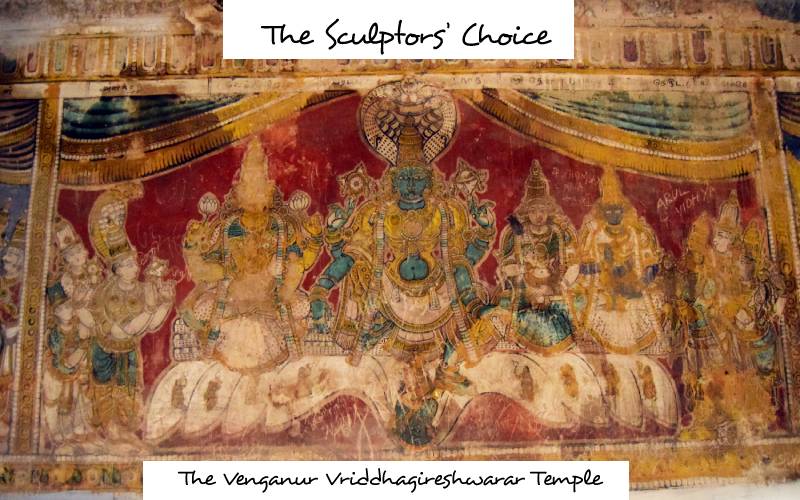
This temple was constructed in the 17th century. The skill, talents, and the knowledge possessed by the artisans were applaudable. Those could be keenly witnessed in every stone structure found in the temple premises.
Generally, it is opined that Pallavas did the best of the structures, Cholas excelled them at numerous points, and Nayaks did things that were out in proportion. As we come down in age, towards 18th and 19th centuries, it was wrongly presumed that the quality of sculpting started deteriorating. But the fact is even if the artist dies, the art remains immortal as knowledge throughout generations.
Apart from sculptures, various paintings could also be spotted. Behind the first Prakaara, the painting of Kaal Maari Aadiya Nataraja is found. Other paintings include Ardhanaarishwara; Ganesha; Bikshadanamurthy; Brahma along with Saraswati in Brahmaloka; Mahavishnu and his consorts seated on Aadi Shesha in Vaikunta; Shiva, Parvati, Ganesha and Muruga along with his consorts, Valli and Devasena, Rishi-s, kings praying to them in Kailasa; Raasa Leela; Raasi Mandala; Goddess Saraswati seated on a lotus; Navagraha Mandala etc.
The Kalyaana Mandapa found at the entrance of the temple was built only in the later period of 1910 C. E. The Sthapathi-s who had sculpted the pillars in the Mandapa have done an excellent job. The uniqueness of pillars is that one could notice one pillar supported by other slender pillars near them. Two or three versions of the uniquely designed pillars could be observed. The roof of the Mandapa is also artfully painted. Although the colours used in the paintings are not natural, even after hundreds of years they retain their brightness.
The kings of Vijayanagar empire, and their governors known as the Nayaks immensely contributed to the great religion by expanding the temples. The most prominent was the rule of Sri Krishna Deva Raya. The period witnessed the maximum development activities and construction of several memorable temples.
Thanks to the kings and all others whose contributions stand through ages!

S. Gurumurthy is a businessman from Coimbatore and is known for his extensive knowledge on temples and Bharatanatyam. He is the energy behind the Perur Natyaanjali Festival. Gurumurthy is a repository of details connected with sculptures and temple architecture.
NEXT ARTICLE